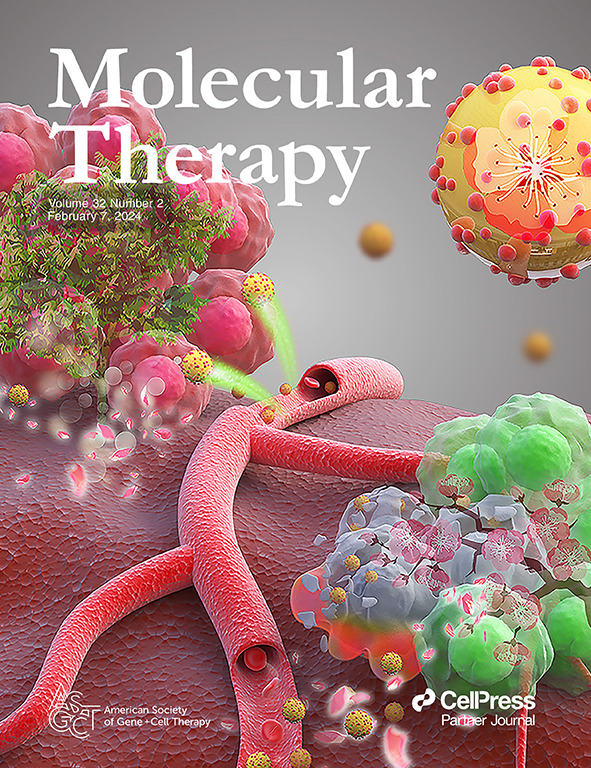Targeted Silencing of Engrailed-1 Reprograms Profibrotic Fibroblast Lineages for Scarless Wound Healing.
IF 12.1
1区 医学
Q1 BIOTECHNOLOGY & APPLIED MICROBIOLOGY
引用次数: 0
Abstract
Skin wounds typically healed with dysfunctional scarring, a fibrotic process largely driven by Engrailed-1 (En1) lineage-positive fibroblasts (EPFs). However, the potential reversibility of EPFs' profibrotic effects and corresponding therapeutic strategies remain elusive. Here, we develop a nanoscale fibroblast-mimic carrier (FibroMC) for targeted delivery of En1-specific small interfering RNA (siEn1) to fibroblasts, aiming to inhibit En1 expression and reverse their profibrotic effects. FibroMC was constructed by functionalizing Food and Drug Administration (FDA)-approved ionizable lipid nanoparticles with fibroblast cell membrane. With incorporated cell membrane proteins (e.g., integrin β1 and N-cadherin), FibroMC was preferentially taken up by fibroblasts, leading to potent silencing of En1 in all EPF populations both in vitro and in vivo. Consequently, FibroMC treatment significantly inhibited collagen I expression and myofibroblast differentiation. A single dose of topical application of FibroMC to the wound effectively restored collagen architecture, regenerated skin appendages, recover skin mechanical property and ultimately prevented scar formation. Our findings demonstrate that FibroMC-mediated En1 silencing can reverse the profibrotic effect of EPFs, offering a promising therapeutic strategy for scarless wound healing.靶向沉默镌刻-1重编程纤维化成纤维细胞系用于无疤痕伤口愈合。
皮肤伤口愈合时通常伴有功能失调疤痕,这是一个主要由En1谱系阳性成纤维细胞(epf)驱动的纤维化过程。然而,epf的促纤维化作用的潜在可逆性和相应的治疗策略仍然难以捉摸。在这里,我们开发了一种纳米级成纤维细胞模拟载体(FibroMC),用于靶向递送En1特异性小干扰RNA (siEn1)到成纤维细胞,旨在抑制En1的表达并逆转其促纤维化作用。FibroMC是由美国食品和药物管理局(FDA)批准的可电离脂质纳米颗粒与成纤维细胞膜功能化而构建的。通过结合细胞膜蛋白(如整合素β1和n -钙粘蛋白),FibroMC优先被成纤维细胞吸收,导致体外和体内所有EPF群体中En1的有效沉默。因此,FibroMC治疗显著抑制I型胶原表达和肌成纤维细胞分化。单次局部应用FibroMC创面可有效修复胶原结构,再生皮肤附着物,恢复皮肤力学性能,最终防止瘢痕形成。我们的研究结果表明,纤维mc介导的En1沉默可以逆转epf的促纤维化作用,为无疤痕伤口愈合提供了一种有希望的治疗策略。
本文章由计算机程序翻译,如有差异,请以英文原文为准。
求助全文
约1分钟内获得全文
求助全文
来源期刊

Molecular Therapy
医学-生物工程与应用微生物
CiteScore
19.20
自引率
3.20%
发文量
357
审稿时长
3 months
期刊介绍:
Molecular Therapy is the leading journal for research in gene transfer, vector development, stem cell manipulation, and therapeutic interventions. It covers a broad spectrum of topics including genetic and acquired disease correction, vaccine development, pre-clinical validation, safety/efficacy studies, and clinical trials. With a focus on advancing genetics, medicine, and biotechnology, Molecular Therapy publishes peer-reviewed research, reviews, and commentaries to showcase the latest advancements in the field. With an impressive impact factor of 12.4 in 2022, it continues to attract top-tier contributions.
 求助内容:
求助内容: 应助结果提醒方式:
应助结果提醒方式:


